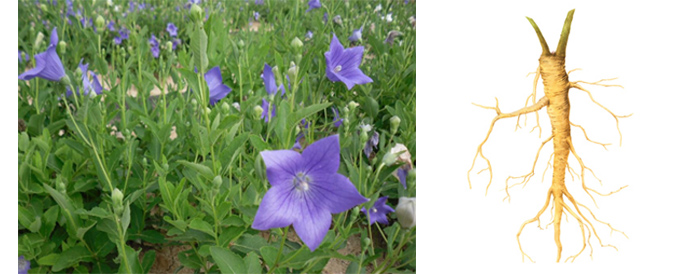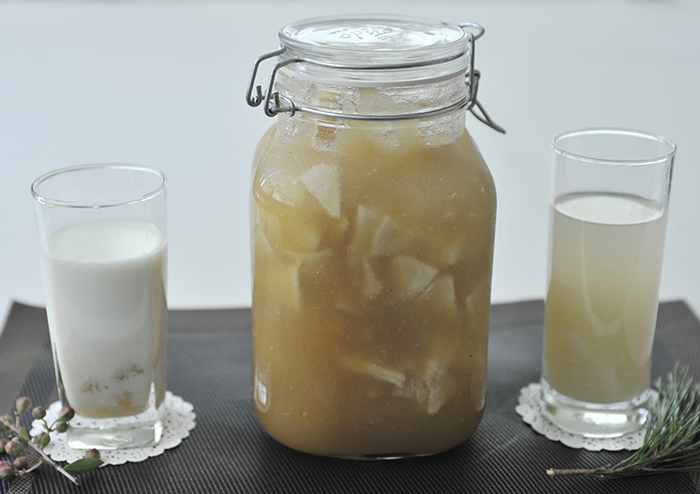
The root of the doraji flower (Platycodon grandiflorus), also known as the bellflower or balloon flower in English, is an effective natural remedy to treat pollution-related respiratory illnesses.
The month of March, with its gardens of budding flowers, is just around the corner.
Unfortunately, the warmer air will also bring with it the seasonal "yellow dust" and fine particulate matter. No need to feel too disheartened, though. The doraji flower will come to the rescue and cure your springtime, pollution-induced blues.
The doraji flower (Platycodon grandiflorus), also known as the bellflower or balloon flower in English, is a plant commonly found across Korea, Japan and China. Its roots are used as a natural remedy to treat coughs, asthma and various inflammations.
Korean traditional medicine gives doraji the herbal name gilgyeong (길경, 桔梗), which means "invaluable and auspicious, with upright roots." Eating some doraji root can strengthen the lining of the bronchial tubes that become susceptible to infection during the polluted spring. The root is also effective at expelling phlegm and at soothing the lungs when they are overexposed to particulate.
Korea's most famous Joseon-era medical book, the Donguibogam (동의보감, 東醫寶鑑), advises doctors to prescribe doraji root to patients who are feeling out of breath, or who suffer from coughs and asthma. It says the root increases circulation in the lungs and thereby helps to cure any shortness of breath.
In terms of nutritional value, doraji contains fiber, calcium and iron. It is also high in saponin, a compound that helps to boost the body's immune system.
While doraji root does have a characteristic bitter taste, with some seasoning it can be prepared as a tasty dish. Doraji muchim, or seasoned, blanched doraji, and doraji bokkeum, stir-fried doraji, are both common side dishes. Another way to prepare the root so that both adults and children can enjoy it is to make a concentrate using doraji root and Asian pear that can be added to hot tea, cold drinks or sauces.

Adding Asian pear to doraji concentrate boosts both the taste and nutritional value. A beverage with just a spoonful of the concentrate can cure coughs and loosen phlegm.
It's easy to make doraji and Asian pear concentrate at home.
You first need to prepare a large jar and disinfect it with boiling water. Prepare some peeled doraji root, Asian pear and honey. You will need these ingredients in a 1:1:1 ratio. Next, chop the pear and root into small pieces and blend them one by one in a mixer. Then pour the mixture into a pot and start boiling it over a low heat, adding the honey by the spoonful. The mixture should be boiled over low for at least an hour, giving it a stir a few times. Finally, when the concentrate is ready, it should be cooled and then poured into the jar and stored in the refrigerator.
The doraji-Asian pear concentrate can be stirred into hot water and served as tea, or mixed with water, milk or even makgeolli and served as an iced beverage.
By Lee Hana
Korea.net Staff Writer
Photo: Rural Development Administration
hlee10@korea.kr